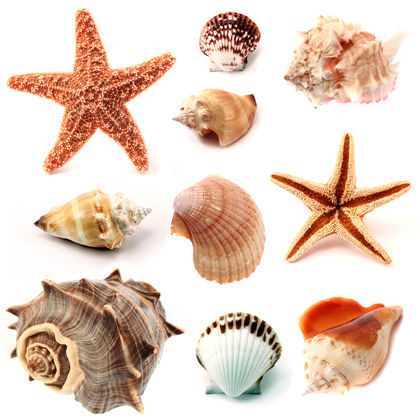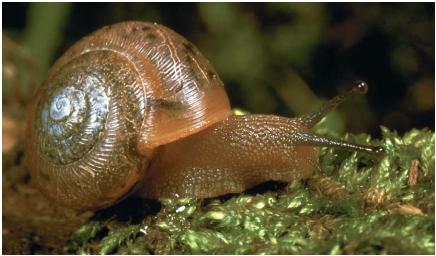Mollusks

Mollusks belong to the phylum Mollusca and make up the second largest group of invertebrates (animals lacking backbones) after the arthropods. Over 100,000 species of mollusks have been identified. Restaurant menus often include a variety of mollusk dishes, such as oysters on the half-shell, steamed mussels, fried clams, fried squid, or escargots.
Mollusks have certain characteristic features, including a head with sense organs and a mouth, a muscular foot, a hump containing the digestive and reproductive organs, and an envelope of tissue (called the mantle) that usually secretes a hard, protective shell. Practically all of the shells found on beaches and prized by collectors belong to mollusks. Among the more familiar mollusks are snails, whelks, conchs, clams, mussels, scallops, oysters, squid, and octopuses. Less noticeable, but also common, are chitons, cuttlefish, limpets, nudibranchs, and slugs.
Classes of mollusks
The largest number of species of mollusks are in the class Gastropoda, which includes snails with a coiled shell and others lacking a shell. The next largest group are the bivalves (class Bivalvia), the chitons (class Amphineura), and octopus and squid, (class Cephalopoda). Other classes of mollusks are the class Scaphopoda, consisting of a few species of small mollusks with a tapered, tubular shell, and the class Monoplacophora. The last of these classes was once thought to be extinct, but a few living species have been found in the ocean depths. Some fossil shells recognizable as gastropods and bivalves have been found in rocks 570 million years old.
Evolutionary patterns
Mollusks provide a clear example of adaptive radiation. Adaptive radiation is the process by which closely related organisms gradually evolve in different directions in order to take advantage of specialized parts of the environment. The gastropods and bivalves were originally marine organisms, living in salt water. They subsequently evolved to take advantage of freshwater habitats. Without much change in their outward appearance, these animals developed physiological mechanisms to retain salts within their cells, a problem they did not face as marine organisms. This new development prevented excessive swelling of their bodies from intake of freshwater.
Several groups of freshwater snails then produced species adapted to life on land. The gills they originally used for the extraction of oxygen

from water were transformed in land snails into lungs, which extract oxygen from air. Similarly, the excretion of ammonia typical of aquatic mollusks evolved into uric acid excretion typical of birds and reptiles.